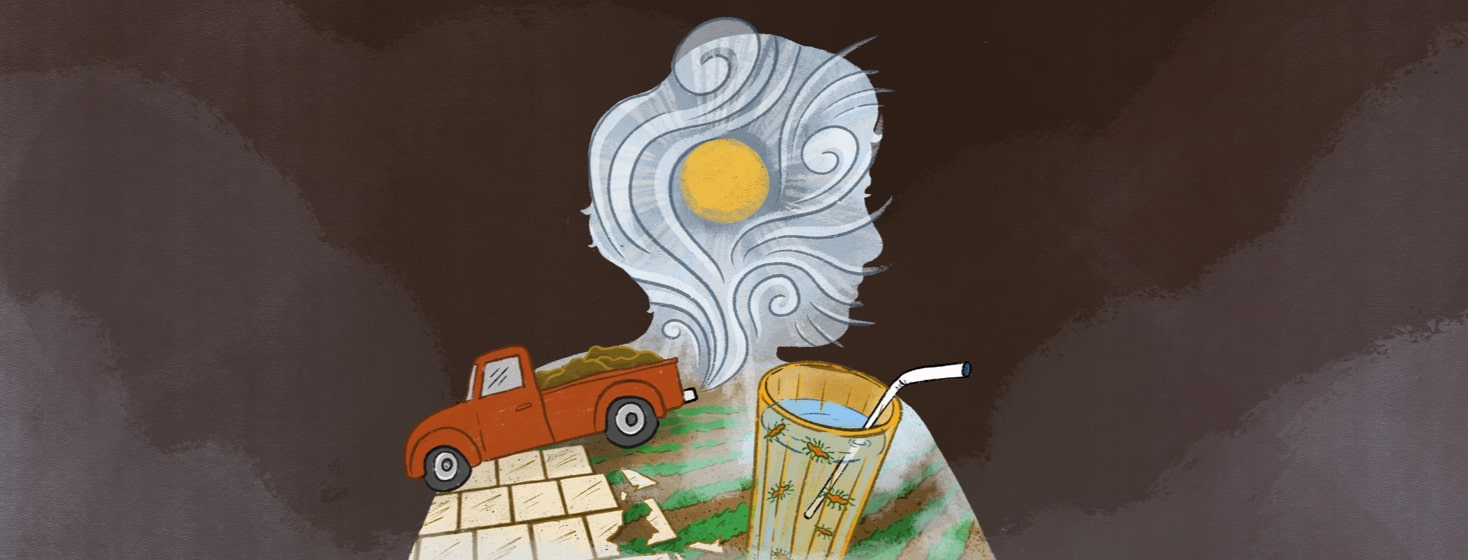Bladder Cancer: Environmental and Occupational Hazards
Some of the biggest cancer risks come from lifestyle factors known as environmental hazards. These hazards are present in many people's daily lives. Occupational hazards are a type of environmental hazard that people encounter in the workplace.1,2
Researchers have studied many environmental and occupational risk factors for BC. Doctors estimate that up to 10 percent of bladder cancer cases may result from exposure to these risk factors. Because of this, understanding what they are and how to avoid them can be helpful for preventing or slowing the progression of cancer.3
What are environmental hazards?
Environmental hazards are anything in the air, water, food, or soil that can hurt a person's health. These can be things like:1-6
- UV rays from the sun
- Bad bacteria in drinking water
- Harmful pesticides used on crops
- Chemicals in cleaning products
- Diesel smoke
- Asbestos
How much these hazards can affect you depends on many things. How often you are exposed, how much you are exposed, and the way you are exposed all affect your risk. And some hazards are more linked to BC than others.4
Which environmental and occupational hazards are linked to bladder cancer?
There are a few major environmental and occupational hazards that are considered risk factors for BC. Some put people at risk for general cancer, but some have been shown to specifically affect BC.5
One environmental hazard that has been linked to BC is air pollution. Air pollution can cause inflammation and immune responses. It also can harm genes involved in managing cell replication (a major problem in cancer). Pollution exposure, especially from car emissions, can make BC more frequent and more deadly.6
Occupational hazards that increase the risk of BC in workers include:3
- Metal or mining byproducts
- Cigarette smoke
- Natural gas or fuel fumes
- Welding byproducts
- Pesticides – specifically insecticides, herbicides, and fungicides
Specific chemicals in these industries are most highly linked to BC. The three main classes of these chemicals are aromatic amines, polycyclic aromatic hydrocarbons (PAHs), and heavy metal / mixed compounds. These are present in areas like rubber plants, places that work with diesel, and more. Knowing about them can help you find out if you are exposed to them.3,6
How can I prevent environmental and occupational hazards from affecting me?
You cannot avoid having some exposure to environmental and occupational hazards. But there are measures you can take to reduce your contact with them.
For air pollution, there are a few things you can do in your daily life to lower your exposure. Wearing a face mask if you are in a place with high pollution is highly effective. You also can use an air purifier in your home. Any amount you can reduce your contact with air pollution is helpful.5
Occupational exposure is a little more tricky. Unless you want to quit your job, it can be hard to find ways to reduce your risk from these hazards. However, helpful steps you can take include:1,5
- Limiting your exposure to harmful substances
- Using personal protective equipment
- Working in a well-ventilated space
On a larger scale, employers in high-risk industries should educate their employees on occupational risk factors and reduce them wherever possible. There is a need for stronger rules and regulations around both occupational and environmental hazards. In the meantime, knowing what is harmful and avoiding it can reduce your risk of developing cancer.3

Join the conversation